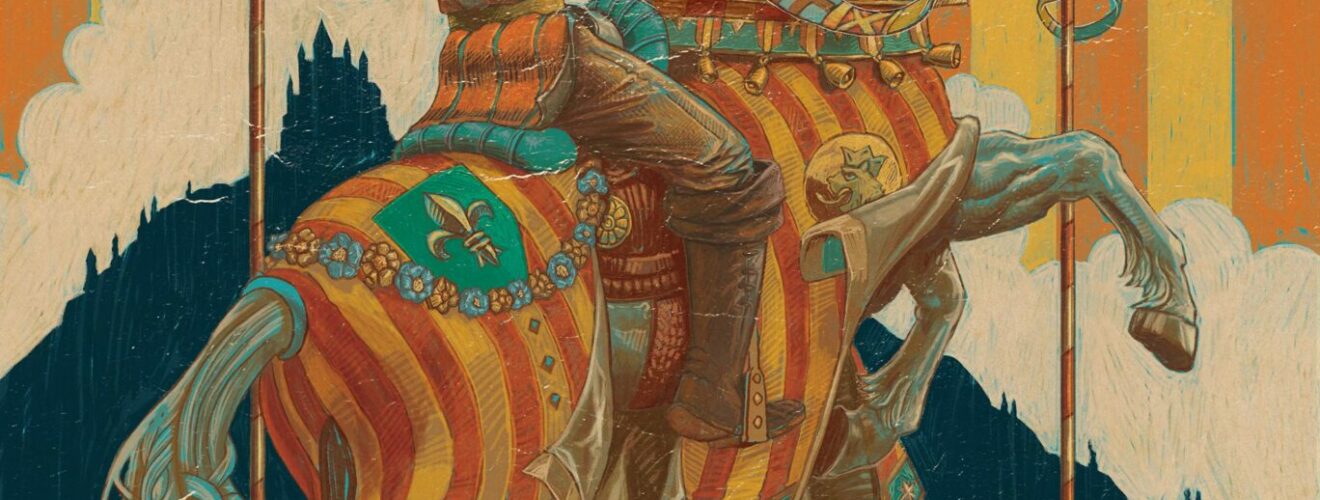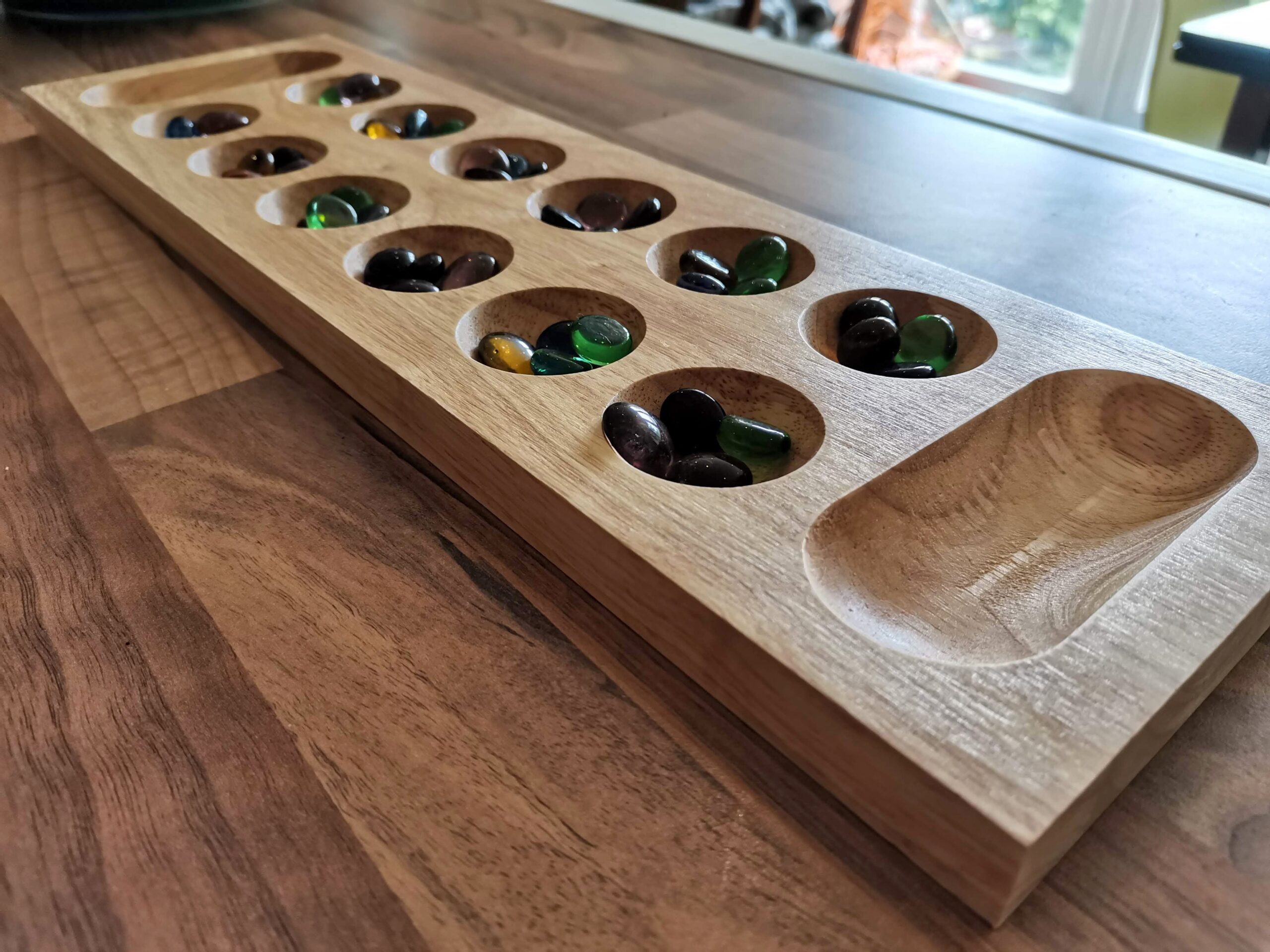Cascadero Review

Dr Reiner Knizia is still designing games, still getting games signed by publishers, and still making really good games. How? How does one man keep this up after so long? He has 10 games inside the BGG top 500, and six of those were first published before 2000, so it’s not hype. It’s classic game design. It’s phenomenal, and he’s still making absolute bangers. Cascadero is another banger. A game which looks and feels a lot like a cube rails game to me, but spurns trains in favour of little wooden horses, and I love it.
Horsepower
I’m a big fan of cube rail games. Train games that usually involve laying track, creating routes, and often investing in the various companies on offer. I’ve covered Luzon Rails, Ride the Rails, and Mini Express here before, and I can honestly say I haven’t found one I didn’t like yet. Why mention trains in a game about putting little horse envoys on a board? It’s the network building, the point-to-point scoring, and the attempts to link towns of different and same colours. It all puts me in mind of a cube rail game, albeit with a more simple ruleset.
On your turn, you just have to place an envoy on any unoccupied hex on the board. That’s it. If the newly placed envoy is adjacent to one of your previously placed ones it forms a group, or extends a previously made group. If the newly placed envoy is part of a group, and next to a town hex that the group wasn’t touching before, you move your cube up the track of the same colour as the town. As those cubes march steadily northward up the tracks they trigger bonuses such as points, bumping another track, or placing another envoy.

You can see that it’s a pretty simple idea for a game, but it’s in the nuance where it comes alive. The little things. For instance, if you’re the first to visit a town you get a single move up that track. If someone is there before you though, you get two steps instead. If the town is one of the four that have a white herald figure on, that town earns a bonus step too, so by just getting your timing right you can have a three-point visit to a single town.
You can get extra points for connecting towns of the same colour too, and some bigger bonuses for being the first to connect three of a kind, or one of each of the five colours, so there’s some real competition there. If someone’s close to claiming those points, it’d be a real shame if someone placed their horsey in the way, blocking their route, right? 😏
Making tracks
The tracks that you’re bumping your cubes up is the most fun part of the game for me. It’s the reward for clever placement and network-building on the other half of the board. The tracks are designed like ribbons, and you get the bonuses from every spot your cubes pass and stop at along the way, with the exception of the folds in the ribbons. If you manage to stop exactly in one of the folds you claim a seal token. If you place an envoy on a seal and then onto the board, it’s treated as a group. So you can take that single unit, place it somewhere on the map (remember, you can place it anywhere) and score it. Time that well and you can drop a single horsey for three track steps. How’d you like them apples?! Probably quite a lot, I guess. It’s a horse after all.
It’s moves like this that make Cascadero as much fun as it is. At first, the game seems simple and so straightforward, but the towns are in such close proximity that there are countless opportunities to make clever plays full of combos. You move up a track which gives another track a bump. That bump lets you place another envoy down, which in turn moves a cube into one of the folds which lets you move an already-placed horse to an adjacent space, which in turn triggers more shenanigans. Awesome stuff.

I’ve purposely waited this long to tell you the most interesting thing Cascadero foists upon you. It doesn’t matter if you have a huge score at the end of the game if you don’t hit the top of the track which matches your player colour. This artificial insistence on a single track completion is something you almost never see in other games, and I really like it. Throwing in a different target for each player means the game doesn’t become a mess of spite placement.
You can’t just try to cut across other players’ groups to deny them a link in their chain, because you won’t make it to the top of your track. This combined with the fact that there’s nothing to stop you from forming small groups all over the map, means that the cut and thrust of duelling for space on the map isn’t the be-all and end-all. It’s a really nice level of interaction that falls somewhere between a take that game and the multiplayer solitaire of a dry Euro.
Final thoughts
Cascadero is the sort of game which is an instant hit with me. Two to four players, a super slim box which fits in the gaps on any shelves, a couple of minutes to set up, and all done in under an hour. Ideal. Too few games fill that gap between a multi-hour big box game and a small card game, so it makes me really happy when one comes along that does it so well. The bonus actions start slowly but as the game moves on they build and build, and it almost feels like a race towards the end.

There’s another version of the game on the flip side of the board – Farmers – which replaces many of the towns with randomised tiles which give you bonuses if you build onto them. It’s fun and a clever take on the main game. Lots more bonuses to collect but fewer towns to try to advance your track. It’s a nice change, but for me, the base game is the most fun. Especially the variant which only uses two of the four heralds, but sees them getting moved every time they score for someone.
It’d be remiss of me to not mention the presentation too. I’m openly an Ian O’Toole fanboy, and Cascadero just cements my admiration of his work on games. Gorgeous muted colours, clean and deliberate iconography, and the characteristic graphic design which simultaneously shows the game off without getting in the way. Cascadero isn’t just a very good game, it might even be my favourite Knizia game. The only downside I can find is that with two players the competition isn’t as much fun. With three or four, however, it’s brilliant.
You can buy this game from my retail partner, Kienda. Remember to sign-up for your account at kienda.co.uk/punchboard for a 5% discount on your first order of £60 or more.

Cascadero (2024)
Design: Reiner Knizia
Publisher: Bitewing Games
Art: Ian O’Toole
Players: 2-4
Playing time: 60 mins













